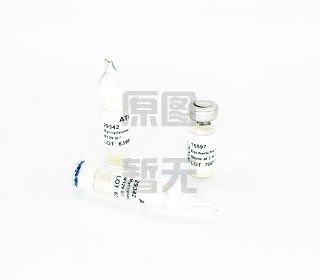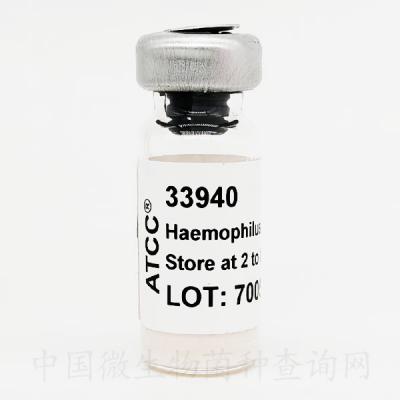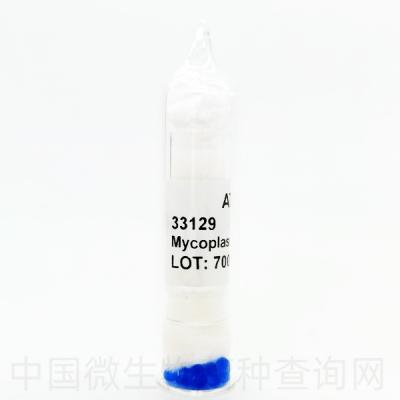
Ureaplasma urealyticum Shepard et al.
27819 ™
Product category
Bacteria
Strain designation
Co
Type strain
No
Isolation source
Urethra (Reiter's Syndrome)
Product format
Freeze-dried
General
Preceptrol
No
Characteristics
Serotype
VII
Handling information
Medium
ATCC Medium 2616: Ureaplasma Medium - Special Modified Formulation
Temperature
37°C
Atmosphere
Broth: Aerobic
Plates: Anaerobic
Handling procedure
1. Follow instructions as suggested for the culturing of Mollicutes:
PROCEDURES FOR PROPAGATING MOLLICUTES:
a) Open the vial according to the enclosed instructions.
b) Using a Pasteur or 1.0 mL pipette, withdraw approximately 0.5 to 1.0 mL from a tube containing 5.0 mL. Rehydrate the pellet.
c) Aseptically transfer this aliquot back into the tube. Mix well.
d) Make serial dilutions by transferring 0.5 mL from the original tube to a tube containing 4.5 mL. Repeat process by transferring 0.5 mL from the second to a third tube, etc. Dilutions are important, not only for titration purposes, but also to keep culture in varying stages of growth. Many strains will die out rapidly once acid or alkaline conditions are reached. It is recommended to prepare several dilutions from the initial tube as the cryoprotectant used in the freeze?drying process often inhibits growth.
e) Use an uninoculated tube of broth to serve as a control.
f) Plates may be inoculated to check colonial morphology. You can also spot each dilution on the surface of plate (4 or more/plate) to determine the number of colony-forming units. However, not all strains do well on solid medium.
g) Incubate all tubes and plates under the recommended conditions and appropriate temperature. The time necessary for growth will vary from strain to strain. Growth on plates generally requires additional incubation.
h) Depending on the medium used, growth will be indicated by increased turbidity, a color change, or both.
2. Tubes may be incubated aerobically, but plates are incubated under anaerobic conditions. The incubation temperature is 37oC.
Handling notes
Ureaplasmas grow very rapidly. The indicator in the first tube will change color to a darker red within hours. It is especially important to make serial dilutions of this strain, for when alkaline conditions are reached (as indicated by the color change), the culture will rapidly die out unless refrigerated immediately (+4°C) or stored frozen at ?60°C. Refrigerated broth cultures may remain viable for periods up to 30 days. No visible turbidity will be seen. The color change is the only indication of growth. Therefore, transfer, freeze, or lyophilize the culture as soon as possible. Growth on agar medium is very poor and slow. Broth is the best method for propagation.
Store vials at freezer temperatures until ready to use.
Additional information on this culture is available on the ATCC® web site at www.atcc.org.





